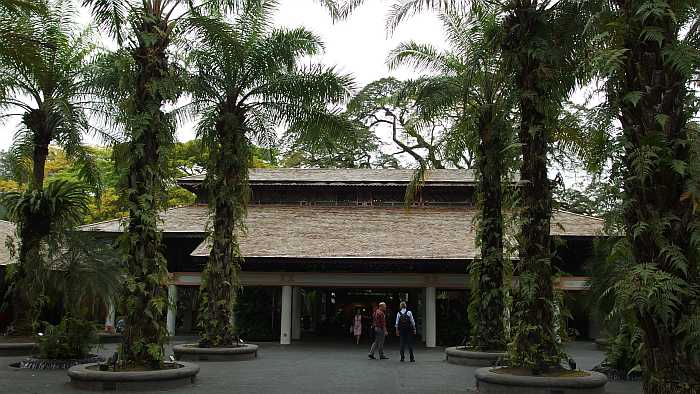Measuring Greenhouse Gases in Singapur

With the SINSOIL project, the first baseline data on soil GHG emissions (CO2, N2O and CH4) from a natural forest land and an urban parkland in Singapur under commonly used management practices (grass vegetation, N fixing plants and compost application) over a 1 year period will be collected.
Studies on greenhouse gas (GHG) emissions in humid tropical ecosystems are limited although they exert substantial influence on the atmospheric concentrations of the GHGs [carbon dioxide (CO₂), nitrous oxide (N₂O), and methane (CH₄)]. On the other hand the source and sink capacities of these greenhouse gases from tropical ecosystems are rare. High rainfall and year round high air temperature in the tropics provide optimal conditions for the biogeochemical cycling of nitrogen (N) and carbon (C).
These ecosystems generate the highest soil-atmosphere CO₂ fluxes of any biome, provide the largest natural source of N₂O, and are increasingly thought to provide a substantial net source of CH₄. Although the net C balance of humid tropical forest soils remains uncertain, they contain a significant portion (approximately 500 Pg) of the terrestrial organic carbon (C) pool. But, land-use change (e.g. creation of parkland), management and climate change affect soil C and N storage and cycling from humid tropical soils and soil GHG emissions will substantially differ across different ecosystems and management practices.
The project SINSOIL follows two objectives
To receive detailed soil GHG flux data as a baseline for the quantification of soil GHG effluxes in Singapore. Soil GHG fluxes will be quantified from a natural forest land in the Central Catchment (Fig.), which also serves as a current SINCA plot and also from an urban parkland/grassland. This will allow us to assess soil GHG fluxes throughout a full year and to relate them to soil and environmental properties. In a further step, annual soil GHG emissions can be upscaled and the output of SINCA can be validated with regard to the previously assessed soil GHG emissions.
To provide deeper understanding of the influence of different management strategies on soil GHG-emissions. We aim at assessing for the first time the effects of commonly used parkland management practices on soil GHG emissions in tropical regions. As a primary objective, the data will provide best management practice guidelines with regard to the reduction of GHG emissions.
Methods
Fluxes of nitrous oxide (N2O), methane (CH4), and carbon dioxide (CO2) will be measured monthly over 1 year in 2 ecosystems – a forest site and in an urban parkland site. In the parkland site 3 different typical management practices (a grassland (control), a compost application on the grassland and a planting of N-fixing plants) will be applied. In the parkland GHG fluxes are measured from 15 plots á 4 chambers using the static chamber technique. At the forest site 5 plots á 4 chambers were installed.

Gas samples are sent to the BFW and analyzed by gas chromatography. The soil samples will be taken every 2nd month to characterize the soil microbial biomass and the nitrogen availability. Additionally, soil temperature and soil moisture are recorded automatically. CO2 flux is measured on site with a portable CO2 analyzer.
Objectives of SINSOIL
- Capacity building: (i) knowledge on set-up of a scientific experiment dealing with soil GHG emissions (ii) monitor environmental parameters, sample soil and litter and sample gas for N2O and CH4 flux calculation and measure CO2 emissions using a infrared gas analyzer and (iii) model GHG fluxes.
- Database: A database for GHGs will be developed. All gas measurements, soil analysis, climate and vegetation data will be included in the database.
- Measuring of GHG fluxes in both forest and urban soils to calculate annual GHG budgets of natural forest and managed grassland systems.
- Develop GHG mitigation strategies for managed urban grassland soils.
- Deliverables: Project report and scientific publications (peer-reviewed and popular articles) and presentations at international conferences.
Participants at BFW: Barbara Kitzler, Ernst Leitgeb, Andreas Schindlbacher, Armin Hofbauer, Katarina Stefaner, Brigitte Schraufstaedter, Raffaela Wettl, Eugenie Fink
Participants in Singapur: Subhadip Ghosh, Mohamed Lokman Yusof, Hassan Ibrahim